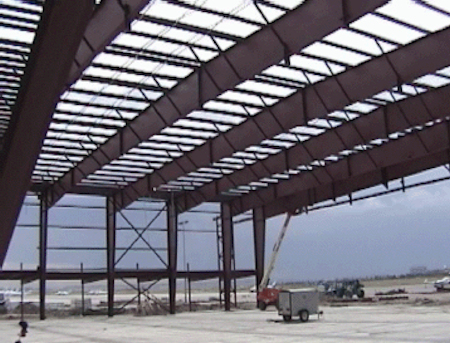Metal Buildings and Overhead Hazards
More than 50% of industrial buildings in steel erection are systems-engineered.
These metal structures use different types of steel members and a different erection process than typical steel erection. They also present certain unique hazards, such as those associated with anchor bolts, construction loads, and double connections.
The primary sources of information for metal buildings is from OSHA Standard 1926.758 and the information for overhead hazards comes from OSHA Standard 1926.759.
Metal Buildings
Systems-Engineered Metal Buildings
All of the requirements contained in 1926 Subpart R apply to systems-engineered metal buildings, except for 1926.755 (column anchorage) and 1926.757 (open web steel joists).
- All structural columns must be anchored by at least four anchor bolts.
- Rigid frames must have 50% of their bolts, or the number of bolts specified by the manufacturer (whichever is greater) installed and tightened on both sides of the web adjacent to each flange before the hoisting equipment is released.
Construction Loads
Construction loads may be placed on a structural steel framework when the framework is safely bolted, welded or otherwise adequately secured.
Construction loads are prohibited from:
- Being placed on any inadequately secured structural steel framework.
- Being placed beyond any area 8 feet (2.5 m) from the center-line of the primary support member.
Knowledge Check Choose the best answer for the question.
4-1. When constructing systems-engineering metal buildings, all structural columns must _____.
You forgot to answer the question!

